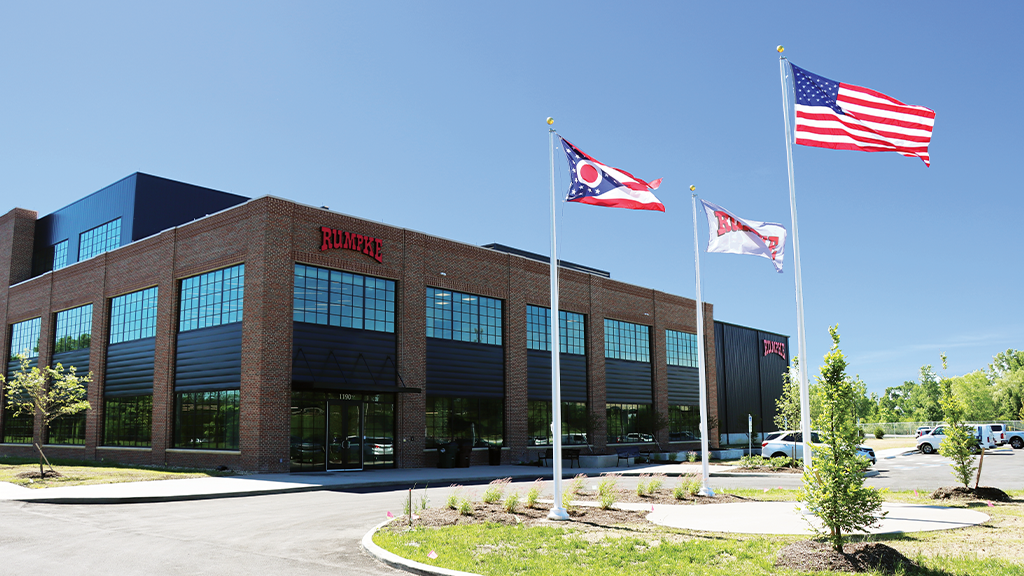Managing waste mud and fluids in the hydro excavation process
Daylighting waste is definitely manageable and certainly profitable

Managing waste — it's a global topic of discussion. Whether it's plastic waste management, recycling our organics, paper, or glass, in every industrial sector the re-use and responsible disposal of material is very topical. In a way, ‘waste' is fast becoming the new byword for opportunity.
In the civil engineering sector, the concerns are the same. We've seen advancements of trenchless technology as hydro excavation, (otherwise known as non-destructive drilling (NDD) or daylighting), has become a more popular means to enable the installation of services and pipework.
Sustainably managing drilling by-products
This method comes with concerns about having to process the resulting bulk of waste mud, fluids, and clay, which are by-products of hydro excavation. While it is popular in infrastructure development and land remediation, it remains a millstone around the necks of drilling operators as they have the burdensome task of disposing of chemically laden mud at the end. This usually means having to get rid of sodden, thick mud and clay. Due to its massive volume, it is extremely expensive to take to landfill, if indeed the site will accept this bulky waste. It is also commonly buried to dry out, but then there's a risk of environmental pollution because of the possible leakage of hydrocarbons into the surrounding soil. If it gets into the water table or other water courses, it could further pollute nearby land.
It's a mire — literally, financially, environmentally. and ethically.
While the rules on disposing of drilling mud vary from state to state in the US and Canada, there's no denying that managing it responsibly is a common approach for the better. Consciously handling drilling muds, rather than just adding drying agents such as sawdust and then dumping them, has a positive impact environmentally as well as economically.
Move it, don't lose it
A huge part of the global waste management movement is looking for the reuse potential in so-called waste materials. If we look beyond what is perceived as a problem, we are inspired to see what opportunities exist in between.
It is quite noticeable that none of the usual disposal methods of post drilling slurry allow for extraction of any useful substances. However, by transporting the waste mud to treatment sites that can dewater it efficiently, recovery of reusable materials is possible. It is also legally more secure, environmentally safer, and commercially astute. The alternative is adding sawdust to the waste, which increases the weight of the waste and the cost of landfilling.
Drilling contractors who choose this method of processing will still be subject to a duty of care when transporting possibly toxic mud responsibly and therefore, safe carriage of the mud must be undertaken by a licensed body.
Customized reception centres for hydro excavation waste recover materials for re-sale and they can even treat any waste water for re-use. By looking more carefully at the potential, new revenue streams can be created, and contractors and engineers will have greater, sustainable control over the waste generated. They can lessen the environmental liability and put reclaimed materials right back into infrastructure development.
On the spot solutions
There is another processing option which isn't restricted to transporting the waste at all, however. Processing the waste on site is a viable solution thanks to modern technology. If it's dealt with in situ, the transport risks are eliminated.
Technological advances now allow for safe dewatering of clay both on-site and off-site with modular dewatering units. They have an added ability to extract any useful materials from the waste clay for re-use. Re-usable materials with further economic value may include sand, stone, and organics. All of which are in demand as re-usable construction aggregate.
Hydro excavation need not be undertaken with trepidation of an unpleasant waste burden at the end of the process. With the options to manage and process the waste material by-products, it also reduces the legal, as well as environmental risks. Its intention as a less invasive means of excavation can be more responsibly fulfilled as a truly sustainable undertaking, with positive returns.



